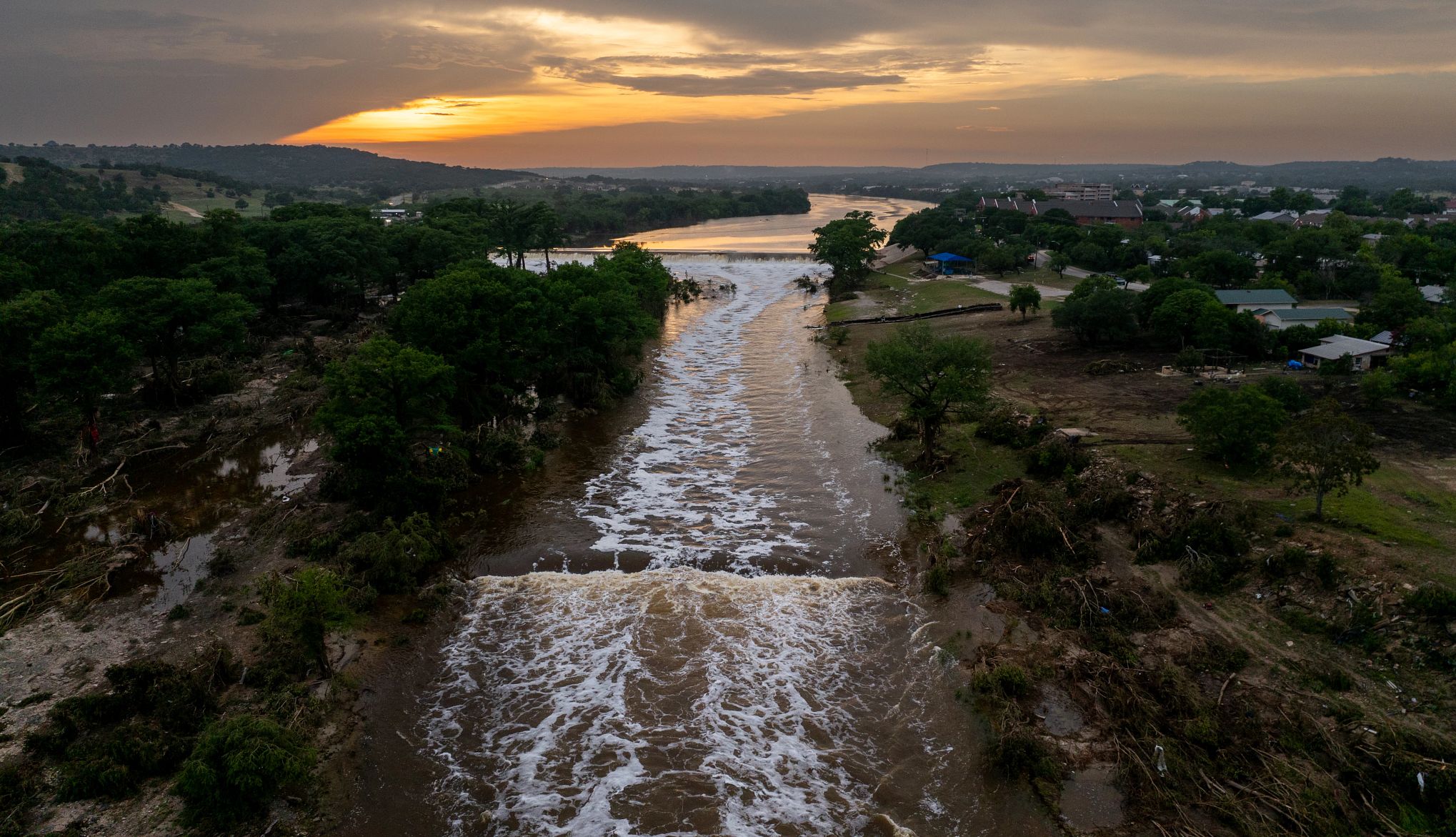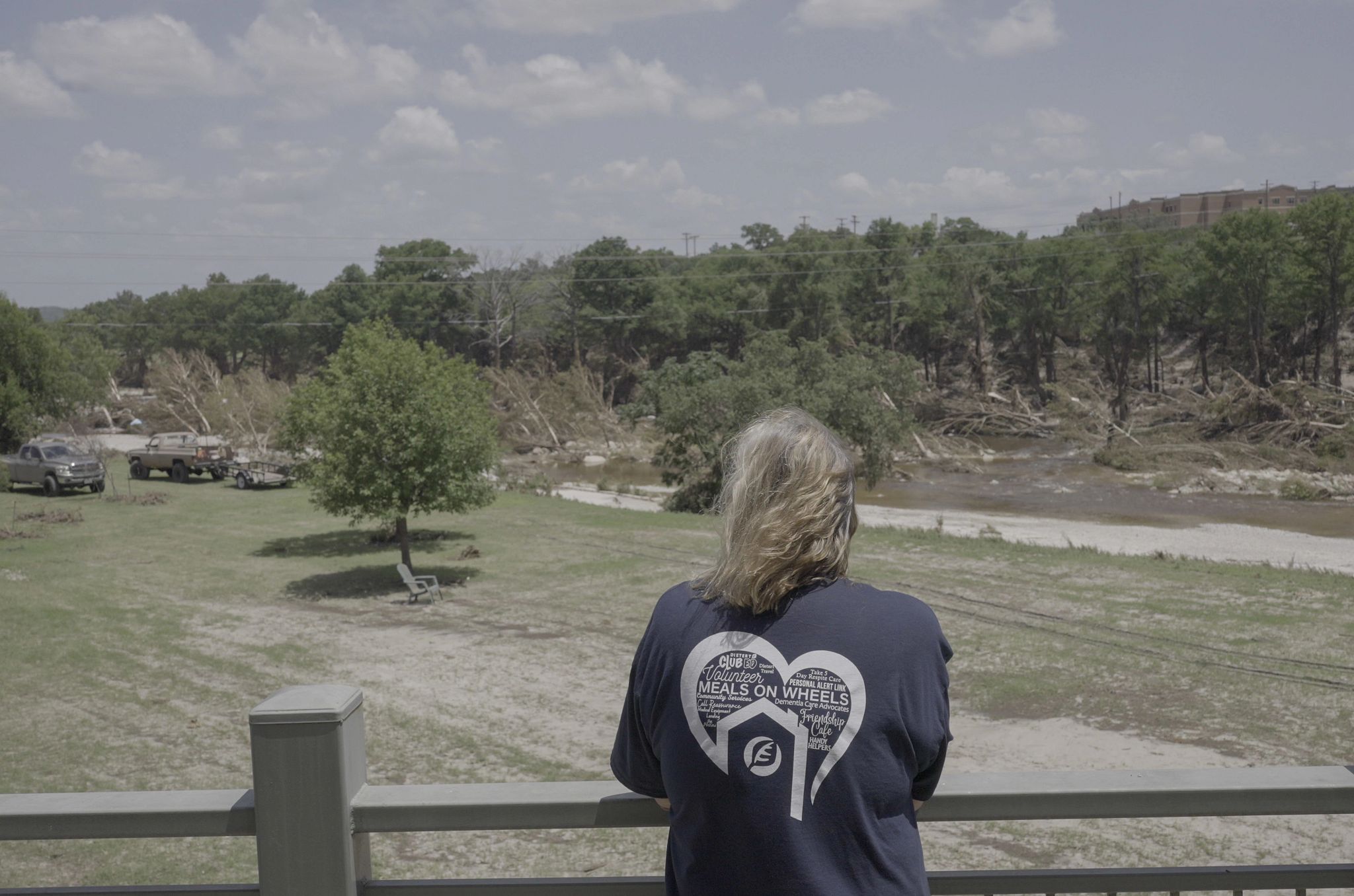AARP Hearing Center


It was 4:30 a.m. and still dark on July 5 when Heather Cokendolpher awoke to an emergency alert from her phone: There was flooding in the area. When she couldn’t go back to sleep, she stepped out of bed and into ankle-deep water covering her bedroom floor.
When she flicked on the lights, Cokendolpher saw a three-foot-high river raging against her French doors, gushing over the back porch of her home in Burnet, Texas. Rain was pelting down, and the nearby Hamilton Creek had flooded to a level unlike anything she had witnessed before.
Cokendolpher, 48, had to get her husband, who uses a wheelchair, and her two teenage sons to higher ground, and quickly. The water was rising fast, its currents getting stronger by the minute. But she had other worries too: the safety of the eight residents of a small assisted living facility she owns and operates on her property, located just a few yards from her home.
Pafford Place’s residents, all age 82 or older, were also trapped.
How to Prepare for Weather Emergencies
- Read our stories about how older adults can get ready for natural disasters before they happen.
- Download the AARP Disaster Resilience Tool Kit to help local leaders, aging experts and community volunteers learn how to meet the needs of older adults.
- Protect important information. The AARP Digital Vault, powered by Prisidio, can be added to a new or existing AARP Membership for $20-a-year. It’s a secure, online way to store and share documents, videos or pictures.
The scene was “horrific,” Cokendolpher recalls. “Absolutely horrific.”
Historic levels of rain and flash floods swallowed the banks of the Texas Hill Country over the Independence Day holiday weekend, washing away homes, campsites, RVs and historic summer camps. The flooding has claimed at least 121 lives, according to authorities, with most of those deaths in Kerr County. Five other counties have also confirmed deaths, including Burnet, where Pafford Place is located.
Many of the victims are children, including a significant number from the all-girls’ Camp Mystic by the Guadalupe River, where at least 27 campers and counselors died. When extreme weather disasters hit America, it’s typically older adults who are disproportionately affected, and their stories are piling up, too: a 62-year-old Walmart employee on her way to work, a 91-year-old lifetime Texan with 17 great-grandchildren, Camp Mystic’s 70-year-old director, a 57-year-old Army veteran who delivered medication to hospitals and nursing homes.
Additionally, more than 170 people statewide are still unaccounted for, according to authorities, and many of those are likely to be older people. Kerr County’s population skews older, with the proportion of locals age 65 and over almost double that of the U.S. population. The county has also long been a holiday haven for older out-of-towners, including retiree campers and grandparents visiting summer camps, according to Brenda Thompson, 66, director of the Dietert Center, a local organization serving older adults in Kerr County.
“I think there’s very possibly some seniors in that group [of the missing],” Thompson says. On Thursday, she was notified that the body of a missing friend, in his 60s or 70s, was recovered 37 miles away from the campground where he and his wife were staying. “Stories like that, there will be more.”


‘The most helpless feeling in the whole wide world’
Research has found that older adults are more vulnerable to extreme weather events and often have higher death rates during and after disasters compared with other age groups. An array of issues is to blame, including higher rates of chronic conditions, physical disabilities, cognitive impairment, social isolation and greater reliance on assistive devices, like walkers and wheelchairs. Lower connectivity rates, limited financial resources and gaps in both personal and official disaster preparedness plans also contribute to increased risk.





































































More From AARP
12 Insider Secrets from a Former Fire Chief
How to keep you and your family safe from potential home disasters
8 Essential Items for an Emergency To-Go Bag
What to keep in a prepacked disaster kit so you're prepared for any extreme weather event
Older Adults Need a Disaster Plan, FEMA Says
Extreme weather can strike during any season these days